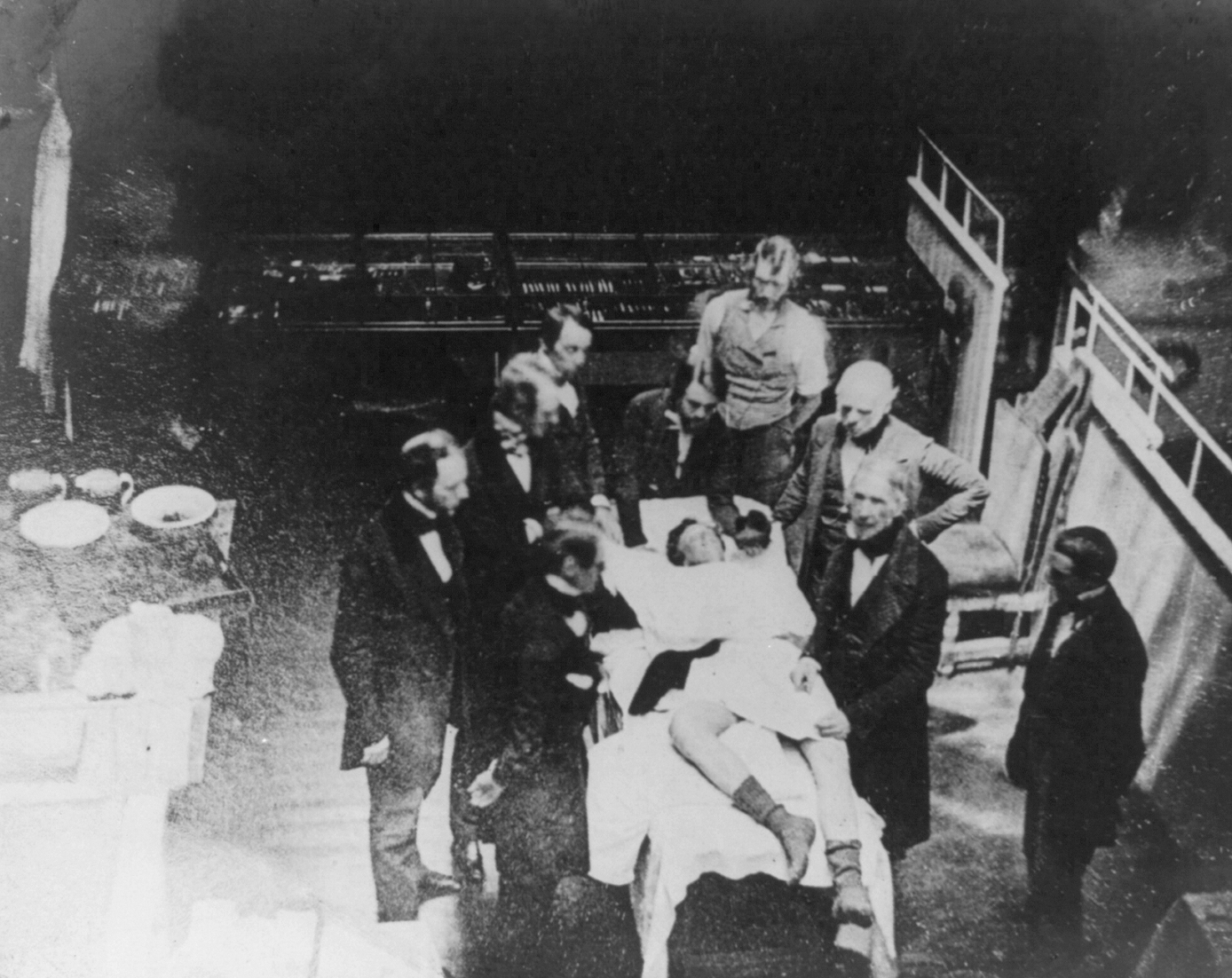People of the future will look at our methods of invasive surgery and marvel in how barbarous the whole thing must have been. For us, the corollary would be reflecting on pre-general-anesthesia surgery. How horrid that was and how wonderful the advance of pain-killing substances in the late 19th century. It made sugery acceptable if not agreeable. For the first time, illness and cure were not viewed with equal trepidation.
Via the always interesting Delancey Place, an excerpt about pre-anesthesia operations from Cristin O’Keefe Aptowicz’s Dr. Mütter’s Marvels:
Surgical lectures at medical universities in the early nineteenth century were brutal, for the teacher, student and patient. Medical training was limited, tools were often not sterile (in some cases a wound oozing and puss filled would indicate a successful surgery), and anesthesia was limited to wine:
“In Philadelphia, there were two great medical colleges — the University of Pennsylvania and Jefferson Medical College — and it was customary for the rival schools to hold surgical demonstrations so that prospective students could choose between them, a glorified public relations exercise. … The lectures were often packed, as eager established and prospective doctors thrilled at the city’s best surgeons attempting to outdo one another with their skill and showmanship. However, the combination of ambitious surgeries and unprepared young [doctors] sometimes proved disastrous. On one occasion, a Jefferson Medical College professor attempted a daring removal of a patient’s upper jaw, using marvelous speed to incise the face and rip out the bones with a huge forceps. But the surgery was perhaps too much for a public display. Doctors who were present would later recall the spectacle of it, how the partially conscious patient spat out blood, bones, and teeth, while unnerved students in the audience vomited and fainted in their seats.
“But regardless of how brutal or simple the case, all surgical lectures were a challenge to watch. The anxious patient would be publicly examined and forced to listen to his surgery loudly outlined to an audience of strangers. Next, the patient would nervously drink some wine with the hope that it would dull the nerves and lessen the pain. (In Paris, the need for medicinal wine was so great, the hospital system maintained its very own wine vaults, spending more than 600,000 francs a year on an extensive collection of red and white wine housed exclusively for its patients.)
“The patient was then instructed to lie on the surgical table, where he would be held down by the surgeon’s assistants and told to stay as still as possible. Everyone — the patient, the doctor, even the students in their seats — knew how impossible this command would be to follow.
“The first incision usually brought the patient’s first scream — the first scream of many. Soon came the blood, the struggle, the shock.•
Tags: Cristin O'Keefe Aptowicz

